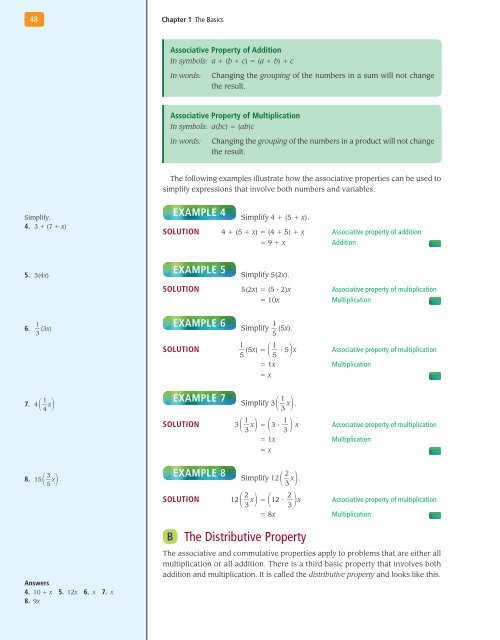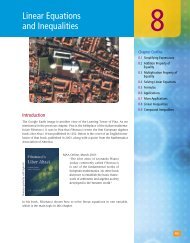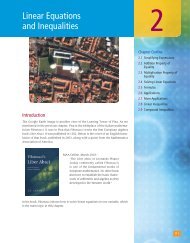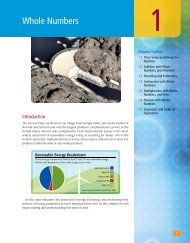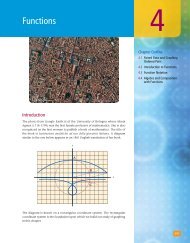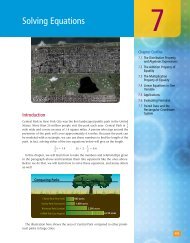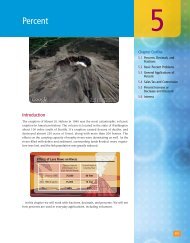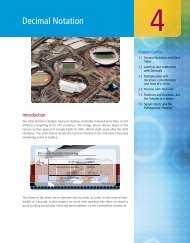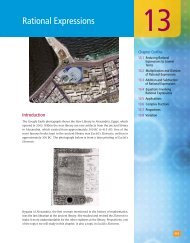Chapter 1 - XYZ Custom Plus
Chapter 1 - XYZ Custom Plus
Chapter 1 - XYZ Custom Plus
You also want an ePaper? Increase the reach of your titles
YUMPU automatically turns print PDFs into web optimized ePapers that Google loves.
48<strong>Chapter</strong> 1 The BasicsAssociative Property of AdditionIn symbols: a + (b + c) = (a + b) + cIn words:Changing the grouping of the numbers in a sum will not changethe result.Associative Property of MultiplicationIn symbols: a(bc) = (ab)cIn words:Changing the grouping of the numbers in a product will not changethe result.The following examples illustrate how the associative properties can be used tosimplify expressions that involve both numbers and variables.Simplify.4. 3 + (7 + x)Example 4Simplify 4 + (5 + x).Solution 4 + (5 + x) = (4 + 5) + x Associative property of addition= 9 + x Addition5. 3(4x)Example 5Simplify 5(2x).Solution 5(2x) = (5 ⋅ 2)x Associative property of multiplication= 10x Multiplication6. _1 ( 3 x)3Example 6Simplify _1 ( 5 x).5Solution_1 5 ( 5 x) = _ 1 5 ⋅ 5 x Associative property of multiplication= 1x Multiplication= x7. 4 1 _4 x Example 7Simplify 3 1 _3 x .Solution3 _ 1 3 x = 3 ⋅ _1 3 x Associative property of multiplication= 1x Multiplication= x8. 15 3 _5 x Example 8Simplify 12 2 _3 x .Solution12 2 _3 x = 12 ⋅ 2 _3 x Associative property of multiplication= 8x MultiplicationAnswers4. 10 + x 5. 12x 6. x 7. x8. 9xB The Distributive PropertyThe associative and commutative properties apply to problems that are either allmultiplication or all addition. There is a third basic property that involves bothaddition and multiplication. It is called the distributive property and looks like this.


